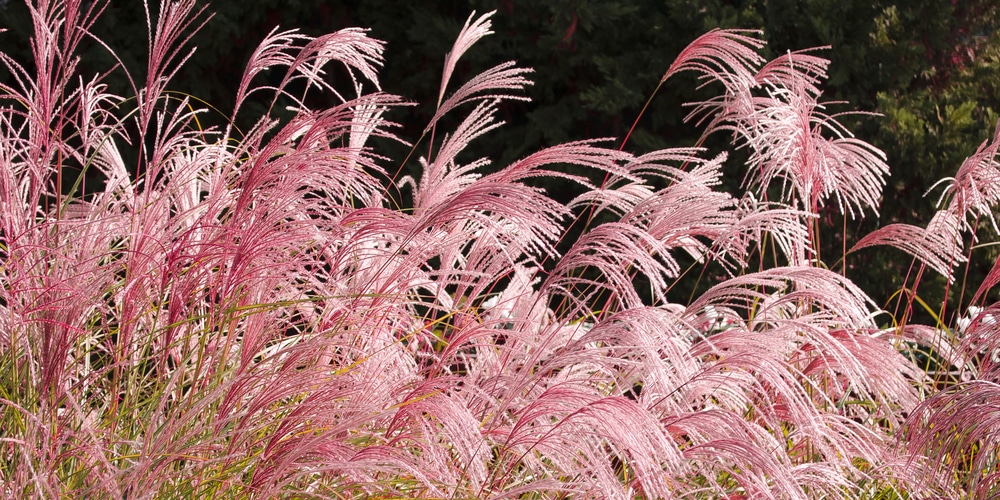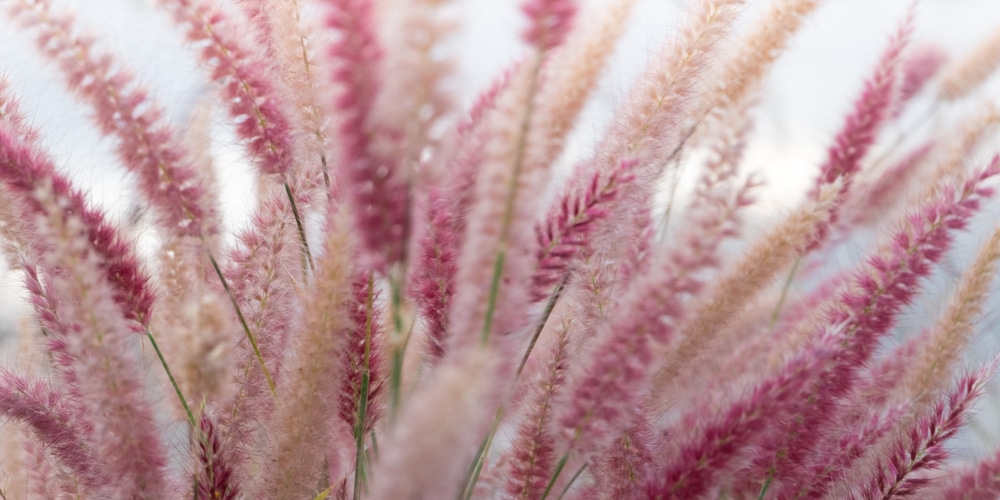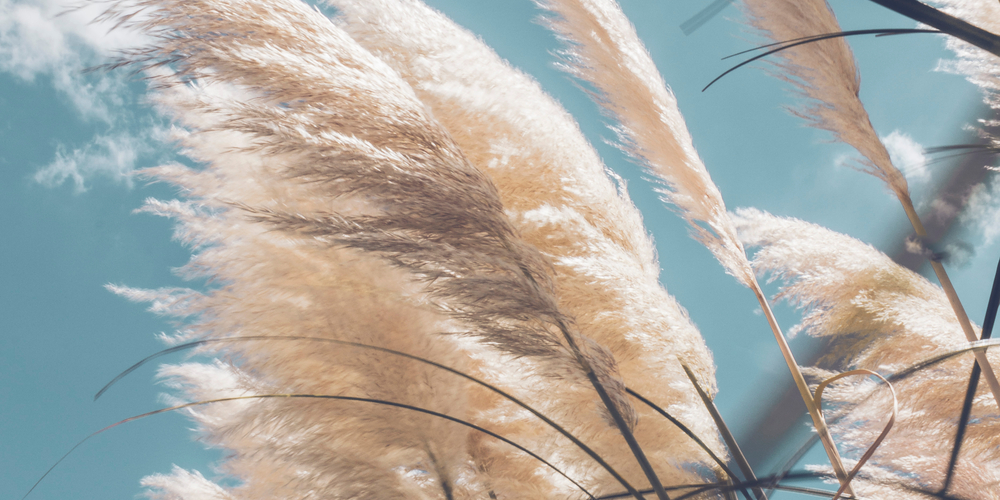Looking at the Pampas Grass, one would never guess that there is a hidden surprise within its pink petals. Close inspection reveals a delicate contrast of colors that makes this grass even more beautiful.
The soft pink against the strong green creates an eye-catching display that is hard to ignore. For anyone looking for a stunning floral arrangement, Pampas Grass Pink is undoubtedly the ideal choice.
| Botanical Name | Cortaderia Selloana |
| Common Name | Pampas grass |
| Plant Type | Perennial |
| Flower Color | Pink, White, Yellow |
| Size When Mature | 60-85 inches |
| Bloom Time | Spring |
| Sun Requirements | Full, partial sun |
| USDA Hardiness Zones | 7-10 |
| Soil PH Range | 6-7 |
| Soil Type | Acidic to neutral, moist but well-draining, loamy |
| Water Needs | Low |
| Native Area | South America |
What You Need to Know About Pampas Grass
Pampas grass is a perennial plant that is native to South America. It grows in dense tufts and can reach heights of between five to seven feet. With its long and narrow leaves and small delicate flowers, pampas grass pink makes a beautiful ornamental plant.
As the long, slender leaves are lit up by the setting sun, they take on a pinkish hue, which is how this plant got its name. Its flowers, ranging from white to pink in color, are also quite striking and bloom from early summer to mid-autumn. Each set of flowers lasts for around two months.
They make for excellent floral arrangements and can be used as decorations for special occasions.
The unique thing about pampas grass pink is that it’s one of the few plants that can change its color. In its natural habitat, the leaves are green, but when grown in full sun, they turn a beautiful shade of pink. This makes it a popular choice for gardeners who want to add a splash of color to their garden.
How to Care for Pampas Grass Pink
Caring for pampas grass requires very little effort. It is a tough plant that can tolerate a wide range of conditions, including poor soil, full sun, and strong winds.
Here’s everything you need to know about growing and caring for a thriving pampas grass pink.
Light
Pampas grass pink is a stunning plant that adds a touch of elegance to any garden. The feathery pink blooms are eye-catching against the green leaves, and the plant is relatively easy to care for. Pampas grass pink prefers full sun, but in some areas, it can tolerate partial shade.
When planted in areas with partial shade, the leaves of the pampas grass pink will be a darker green. If you want the leaves to turn pink, then plant your pampas grass in an area where it will receive at least six hours of sunlight each day.
Water and Soil Needs
Pampas grass pink is a drought-tolerant plant that doesn’t require a lot of water. In fact, too much water can actually be harmful to the plant. When watering pampas grass pink, make sure the soil is dry to the touch before you water it again. When grown in ideal conditions, this plant once a month is enough.
Pampas grass pink grows best in well-drained soil. If your soil is heavy or clay-like, then it’s important to amend it before planting pampas grass pink. To do this, mix in some organic matter, such as compost or peat moss. This will help to improve the drainage and ensure that your pampas grass thrives. The ideal pH level for pampas grass pink is between 6.0 and 7.0.
Temperature Requirements
Pampas grass can survive in USDA climate zones 7-10 and is tolerant of both heat and cold. In fact, this plant actually prefers cooler temperatures. If you live in an area with hot summers, then it’s best to plant pampas grass pink in a spot that receives afternoon shade.
Pampas grass pink can withstand temperatures down to 10 degrees Fahrenheit. If your winters are especially harsh, then it’s a good idea to bring the pampas grass pink indoors before the first frost.
Fertilizer
A balanced 8-8-8 fertilizer is the ideal choice for pampas grass. If you have heavy clay soil, then you might need to amend it with an organic fertilizer that has a higher nitrogen content. Garden centers typically carry fertilizers that are specifically designed for use on ornamental plants like pampas grass pink. This is to ensure that your plant gets the nutrients it needs without being overloaded.
Applying fertilizer to pampas grass is important, but it’s also crucial that you don’t overdo it. Too much fertilizer can actually be harmful to the plant. Apply fertilizer to pampas grass pink once every three months, and make sure you follow the instructions on the fertilizer package.
Common Diseases
When it comes to caring for pampas grass pink, one of the most common diseases you could encounter is known as foot rot. Foot rot primarily affects older foliage and causes it to turn brown and wither away.
Although there is no specific treatment for foot rot, keeping your plants healthy and well-watered will help prevent this disease from taking hold.
Other diseases that pampas grass is susceptible to include rust, mildew, and powdery mildew. All of these diseases can result in yellow or brown spots on the leaves, so it’s essential that you look out for these symptoms if you want to keep your plants healthy.
These can be caused by many different factors, such as improper watering and too much sun exposure.
Fortunately, pampas grass is generally resistant to insect pests. However, if you start to notice snails or slugs in your garden, then these can damage the leaves of the pampas grass pink. To prevent this from happening, sprinkle some slug bait around the base of the plant.
Overall, the key to maintaining a thriving pampas grass pink plant is staying vigilant and keeping up with regular grooming practices like pruning dead or damaged foliage and removing weeds regularly.
Pampas Grass Propagation
One of the most striking features of pampas grass is its long, pink inflorescence, which appears in late summer and early fall. Each inflorescence is composed of numerous small flowers, which are pollinated by bees and other insects.
Once the flowers have been pollinated, the inflorescence turns brown and fades away, leaving behind a cluster of small, feathery seeds. These seeds can be harvested and used for propagation. To propagate pampas grass, simply sow the seeds in a pot or seed tray filled with moist sand or vermiculite.
Keep the pot in a warm, sunny spot and water regularly until the seeds germinate. Once the seedlings have emerged, thin them out so that only the strongest plants remain.
Transplant the seedlings into individual pots filled with well-draining potting mix once they have grown to about 5 cm tall.
Additionally, pampas grass can also be propagated by division in spring or early summer. Simply dig up an existing plant and carefully divide the rootball into two or three sections. replant the divisions immediately, water well, and keep the soil moist until new growth appears.
Final Thoughts
Pampas grass is a beautiful and highly versatile plant that can add interest to your garden all year round. Although it does require a bit of care, it is well worth the effort for those who want to cultivate this gorgeous flower in their own backyard.
The common challenge with pampas grass pink is that it can succumb to various diseases and pests if not properly taken care of. However, by following the tips in this article, you can keep your pampas grass healthy, and looking its best.
Related Article: Trees with Pink Leaves and Flowers


